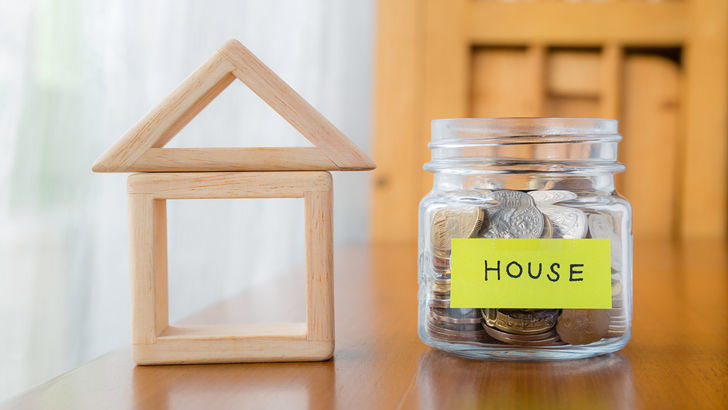The tax break that could leave first-home buyers $10,000 better off
By Nerida Cole
First home buyers who expect to buy a home within the next 6-18 months could get an impressive tax benefit of about $10,000 per couple or $5000 for singles if they can make the maximum contributions to the First Home Super Saver scheme (FHSS). That's a pretty good sweetener to help with the home deposit.
Although the most common way to use the FHSS is to make regular salary sacrifice contributions to your super account, new rule changes mean you can also receive the tax benefits by making a lump sum contribution to your super - right up until June 30, 2018. Check with your super fund what their cut-off is, for when contributions need to be received.
And you can apply to withdraw the extra amounts you have contributed - up to the overall FHSS limit of $30,000 plus interest from as early as July 1, 2018.
So if you're pretty close to finding that dream property, you may even want to make a further contribution in July - which is considered a new financial year - and then request the ATO release your FHSS funds after that.
Because these extra contributions into super are only being invested for the short term, it's wise to elect for the extra contributions to go into the cash investment option within your super fund.
That allows you to maximise the tax benefits of this strategy without risking your capital if investment markets drop.

How it works
Let's take the example of Jane, an average wage earner on $80,000 a year. She has been saving outside of super for a while to buy a home.
Jane puts $15,000 into her super account just before June 30, 2018. Jane also submits an intent to claim deduction form to her super fund before this date. This is an important step as it is what will allow Jane to claim a tax deduction against her personal income when she submits her personal tax return.
In early July, Jane puts a further $15,000 into super as she wants to maximise the potential benefits under the FHSS. Again, Jane submits an intent to claim deduction form. This must be submitted before Jane progresses to the next step - which is requesting a FHSS determination from the ATO. This will set out what the maximum amount is that can be withdrawn from super.
For Jane that maximum withdrawal amount will be the $30,000 she contributed, less the 15% tax her super fund has paid on the contributions, plus the associated earnings on her contributions.
The associated earnings are calculated using a specific ATO mandated rate - called the Shortfall Interest Charge.
In 2017-18 it was approximately 4.7%pa and is sitting around 4.9%pa for quarter one of 2018-19. Contributions made during 2017-18 are taken to be made on July 1, 2017, whereas contributions in later years are taken to be made at the start of the month they are made in. This means the associated earnings included in Jane's withdrawal amount will be approximately $700, taking the maximum withdrawal figure to $26,200.
Jane is happy all the amounts have been included correctly and as she is close to finding a place, Jane applies to the ATO to release this maximum amount. The ATO liaises with Jane's super fund to get the money released within 25 days, but before paying the money to Jane, the ATO will withhold tax on this withdrawal amount at Jane's marginal tax rate including medicare levy (34.5%) less a 30% offset. This equates to 4.5% tax or $1180 - leaving Jane with $25,020.
However, when Jane completes her personal tax return, she will also get to cut her personal tax bill by $5175 for each of the two years she made these special contributions.
So in the end - Jane ends up with $35,370 back in her pocket, when she contributed only $30,000 to her super fund. That's an overall benefit of $5370.
It's worth remembering that unless Jane is eligible to request a PAYG withholding variation from her regular pay for 2018-19, it will take a full 12 months for her to get the second $5175 amount back into her wallet. Doing her tax returns as quickly as possible is another way to help to get that money back in her pocket. If Jane has a HELP debt this needs to be factored in.
If Jane's partner who is on the same marginal tax rate and is also a first home buyer, was able to do exactly the same level of contributions then as a couple they benefit by well above $10,000!
The great thing about the scheme is that if Jane's partner had already bought a home and was not a first home buyer, Jane is not excluded from using the scheme.

What else do I need to know?
The maximum annual contribution under the FHSS is $15,000 with an overall maximum of $30,000.
You also need to stay within the overall super contribution limits. That means all your tax deductible concessional contributions - such as employer SG, salary sacrifice, plus the intended FHSS contribution amount - must not exceed $25,000 a year.
Don't forget to submit an Intent to claim a tax deduction form to your super fund for your FHSS contribution before June 30, 2018 and make sure this amount is included as a deduction in your personal tax returns. If you don't the ATO won't be able to provide you the tax benefit. Remember you need to do this again in July if you make a second contribution.
To access your FHSS money you need to apply to the ATO before you sign a contract on your new home. It's a two-step process, and once approved, the ATO authorises your super fund to release the money to you and you then have up to 12 months to buy a property.
You can request an extension if needed but be warned that if you don't, or you don't use the money for a home, you could face a tax penalty.
Of course, a scheme this generous has a few rules and requirements. So check out the ATO's website for more information.
This information is provided by Dixon Advisory & Superannuation Services Limited (ABN 54 103 071 665, AFSL 231 143) and may contain general financial advice. It was prepared without taking into account your objectives, financial situation or needs. Before acting on any advice, you should consider whether the advice is appropriate to you. Seeking professional personal advice is always highly recommended.
Get stories like this in our newsletters.


